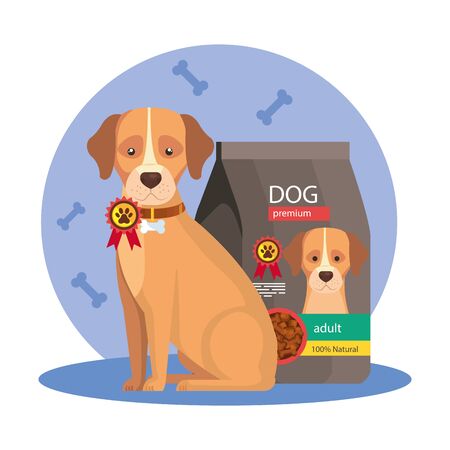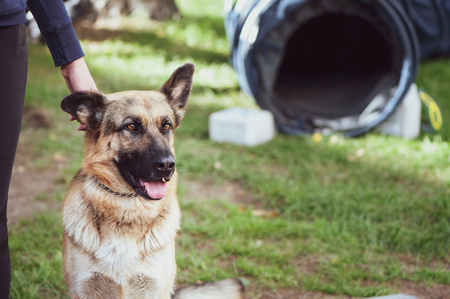1. Introduction to Puppy Treats
Treats play a crucial role in a puppy’s growth, training, and overall development. They are more than just tasty snacks—when used correctly, they can help reinforce good behavior, strengthen the bond between you and your pup, and even contribute to their nutritional needs.
Understanding the Role of Treats in Puppy Training
Puppies are naturally curious and eager to learn. Using treats as positive reinforcement encourages them to follow commands and develop good habits. Whether you’re teaching basic commands like “sit” and “stay” or working on socialization skills, treats provide instant feedback that helps puppies associate actions with rewards.
Why Treats Are Effective for Training
- Immediate Reward: Puppies respond well to instant gratification, making treats a powerful motivator.
- Encourages Repetition: When rewarded consistently, puppies are more likely to repeat desired behaviors.
- Builds Positive Associations: Treats help create positive experiences around training sessions.
Nutritional Benefits of Puppy Treats
Apart from training purposes, high-quality treats can also support your puppy’s health. Many treats contain essential nutrients that promote strong bones, healthy digestion, and a shiny coat. However, it’s important to choose treats that align with your puppy’s dietary needs.
Choosing Healthy Puppy Treats
| Treat Type | Benefits | Considerations |
|---|---|---|
| Soft Training Treats | Easy to chew, great for frequent rewards | Avoid artificial additives |
| Crunchy Biscuits | Supports dental health | Ensure appropriate size for small puppies |
| Freeze-Dried Meat | High in protein and natural ingredients | Monitor portion sizes to prevent overfeeding |
| Vegetable-Based Treats | Rich in fiber and vitamins | Avoid onions, garlic, or harmful ingredients |
The Right Way to Use Treats in Puppy Training
While treats are an excellent tool for training, they should be used wisely. Over-reliance on treats may lead to excessive calorie intake or behavioral issues. To ensure effective use:
- Use Small Portions: Keep treat sizes small so they don’t interfere with regular meals.
- Mix in Praise and Affection: Combine verbal praise and petting with treats for balanced reinforcement.
- Avoid Overfeeding: Stick to a daily treat allowance based on your puppy’s weight and activity level.
- Select High-Quality Ingredients: Look for treats made with natural ingredients and free from artificial preservatives.
Puppy treats are a valuable tool for both training and nutrition when used appropriately. By choosing the right treats and using them strategically, you can set your puppy up for success while keeping them happy and healthy.
2. Training with Treats: How to Use Them Effectively
Treats are a powerful tool for training your puppy, but using them correctly is key to success. When done right, treat-based training strengthens the bond between you and your pup while reinforcing good behavior. Below are some best practices for using treats as positive reinforcement.
Choose the Right Treats
The type of treat you use can make a big difference in training effectiveness. Puppies respond best to small, soft, and highly palatable treats that they can quickly chew and swallow. Here’s a quick guide:
| Treat Type | Best For |
|---|---|
| Soft Training Treats | Quick rewards during fast-paced training |
| Freeze-Dried Meat | High-value rewards for difficult commands |
| Kibble (from their meal) | Everyday reinforcement without overfeeding |
| Homemade Treats | Avoiding additives and allergens |
Treat Timing Matters
Puppies learn through immediate feedback, so timing is crucial. Reward your puppy within one to two seconds of the desired behavior to help them associate the action with the treat.
Avoid Overfeeding
Treats should make up no more than 10% of your puppy’s daily caloric intake. If you’re doing multiple training sessions per day, consider using smaller pieces or adjusting their regular meals accordingly.
Use Treats as Motivation, Not Bribery
Your puppy should perform commands because they’ve learned the behavior, not just because they see a treat in your hand. To prevent reliance on treats, gradually reduce their frequency once your pup consistently follows commands.
Mix Up Rewards
Treats are great motivators, but variety keeps training exciting. Alternate between treats, praise, toys, or playtime to reinforce good behavior in different ways.
Treat-Based Training Tips Recap:
- Select high-value treats: Soft, small, and tasty options work best.
- Time rewards correctly: Give treats immediately after correct behavior.
- Avoid overfeeding: Keep treats within 10% of daily calories.
- Avoid bribery: Don’t let your puppy rely solely on seeing treats.
- Add variety: Use praise and toys alongside treats for balanced reinforcement.
Treat-based training is an effective and enjoyable way to teach your puppy new skills while strengthening your bond. By using treats strategically, you’ll set your pup up for long-term success!

3. Nutritional Benefits of Puppy Treats
Puppy treats arent just for training—they can also play a key role in your puppy’s overall nutrition. Choosing the right treats with high-quality ingredients ensures that your pup gets the nutrients they need while enjoying a tasty reward.
Key Ingredients to Look For
When selecting treats for your puppy, look for ingredients that provide essential nutrients. Here are some key components to consider:
| Ingredient | Benefits |
|---|---|
| High-Quality Protein | Supports muscle growth and overall development. |
| Healthy Fats (Omega-3 & Omega-6) | Aids in brain development and keeps the coat shiny. |
| DHA (Docosahexaenoic Acid) | Essential for cognitive function and vision health. |
| Nutrient-Rich Fruits & Vegetables | Provides vitamins, minerals, and antioxidants for immune support. |
| Easily Digestible Carbohydrates | Powers your pup with sustained energy throughout the day. |
How Treats Contribute to a Balanced Diet
Treats should complement your puppy’s daily meals rather than replace them. Here’s how you can incorporate treats into their diet in a healthy way:
- Treats Should Make Up No More Than 10% of Daily Calories: Overfeeding treats can lead to weight gain and nutritional imbalances.
- Select Low-Calorie Options: Small, nutritious treats help prevent excessive calorie intake while still being rewarding.
- Avoid Artificial Additives and Fillers: Look for natural ingredients without artificial flavors, colors, or preservatives.
- Treats Can Support Training and Growth: Choose treats fortified with essential nutrients like DHA and protein to aid in development.
- Keeps Mealtime Nutritious: If using treats frequently, adjust meal portions slightly to maintain balance.
The right puppy treats not only make training more effective but also contribute to their overall well-being. By choosing nutritious options, you can ensure your pup grows up happy and healthy!
4. Types of Treats: Finding the Right Fit for Your Puppy
Choosing the right treats for your puppy can make training more effective and ensure they get the nutrition they need. There are various types of treats available, each with its own benefits. Understanding the differences can help you pick the best option for your furry friend.
Soft Treats: Perfect for Training
Soft treats are great for training sessions because they are easy to chew and quick to eat. Puppies won’t get distracted by excessive chewing, allowing them to stay focused on learning new commands.
Benefits of Soft Treats:
- Easy to chew and digest
- Ideal for quick rewards during training
- Available in a variety of flavors
Crunchy Bites: Great for Dental Health
Crunchy treats provide a satisfying texture that helps keep your puppy’s teeth clean. The crunchiness can reduce plaque buildup while offering a tasty reward.
Benefits of Crunchy Treats:
- Aids in dental health by reducing plaque
- Longer-lasting than soft treats
- Satisfying texture that puppies love
Natural Chews: Long-Lasting Enjoyment
If you’re looking for a treat that keeps your puppy occupied for longer periods, natural chews are a great choice. They provide both entertainment and nutritional benefits.
Popular Natural Chews:
| Treat Type | Main Benefits |
|---|---|
| Bully Sticks | Easily digestible, rich in protein, long-lasting |
| Pig Ears | Tasty and chewy, promotes dental health |
| Dehydrated Sweet Potatoes | Nutrient-rich, natural fiber source, gentle on digestion |
Selecting the Best Treat for Your Puppy
The best treat depends on your puppy’s needs and preferences. If youre training frequently, soft treats might be ideal. For dental health, crunchy bites work well. If you want something to keep them busy, natural chews are a fantastic option.
5. How Often Should You Give Your Puppy Treats?
Giving your puppy treats is a great way to reinforce good behavior and support training efforts. However, its important to find the right balance to ensure your pup maintains a healthy diet and avoids overfeeding. Lets explore how often you should give your puppy treats and what guidelines to follow.
Understanding Treat Frequency
Puppies have small stomachs and specific nutritional needs, so treats should only make up a small portion of their daily calorie intake. Generally, treats should not exceed 10% of your puppy’s total daily calories. The number of treats you give depends on factors such as age, breed, activity level, and the type of treats used.
Recommended Treat Frequency Based on Age
| Puppy Age | Treat Frequency | Notes |
|---|---|---|
| 8-12 weeks | 3-5 small treats per day | Focus on soft, easy-to-chew treats during early training. |
| 3-6 months | 5-10 small treats per day | Puppies are more active and can handle slightly more rewards. |
| 6+ months | 10-15 small treats per day | Treats can be used more frequently for advanced training sessions. |
The Role of Training in Treat Distribution
If youre actively training your puppy, youll likely be using multiple treats throughout the day. To avoid overfeeding, break larger treats into smaller pieces or use low-calorie options like freeze-dried meat or kibble from their regular diet.
Avoiding Overfeeding
- Use portion control: If youve given extra treats during training, adjust meal portions accordingly.
- Avoid excessive high-calorie treats: Opt for healthy alternatives like carrots or blueberries.
- Monitor weight and digestion: If your puppy gains too much weight or has digestive issues, reduce treat frequency.
Treat Alternatives for Positive Reinforcement
Treats arent the only way to reward good behavior! Try incorporating verbal praise, petting, or playtime as alternative reinforcements. This helps create a well-balanced approach to training while keeping calorie intake in check.
The key to using treats effectively is moderation. By following these guidelines, you can ensure that your puppy enjoys delicious rewards while maintaining a healthy diet.


